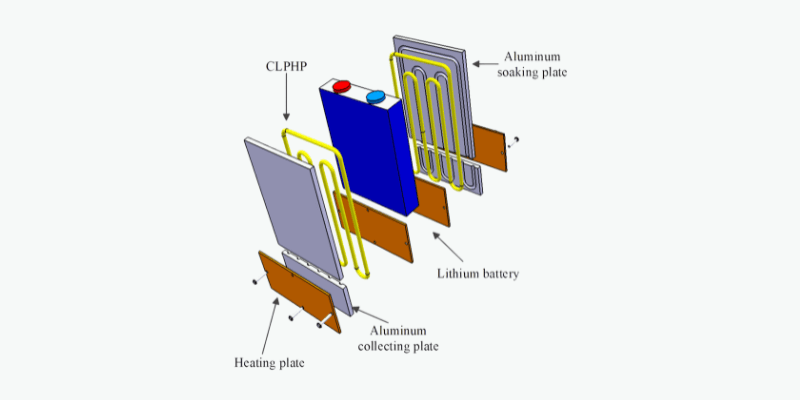Cold weather reduces battery performance, especially in lithium batterier used in tools, vehicles, and camping gear. Standard lithium batteries lose capacity and can be damaged if charged while cold.
Heated lithium batteries solve this problem with built-in heaters that warm them to a safe temperature, ensuring proper function even in freezing conditions. This article explains how cold affects batteries, helps you decide if you need a heated battery, and guides you in choosing a reliable setup year-round.
How the Cold Affects Lithium Batteries
Cold weather affects lithium batteries by altering their internal chemistry and making them less efficient.
Udladning
In cold temperatures, chemical reactions inside the battery slow down, increasing internal resistance. This causes faster voltage drops and reduced power output – sometimes only half of normal performance compared to room temperature.
Opladning
Charging lithium batteries below 32°F (0°C) can cause permanent damage due to “lithium plating,” where metallic lithium builds up inside, risking short circuits, reduced levetid, or safety hazards. Many batteries include systems to prevent charging when too cold.
Possible Water Ingress
Moisture in snowy or wet conditions can enter the battery, causing corrosion or dangerous short circuits. A well-sealed protective case (like one with an IP rating) is essential for outdoor use in cold environments.

When You Should Use Heated Lithium Batteries
Not everyone needs heated batteries, so consider this before investing in them.
Where Are They Installed?
LiFePO4 batteries don’t off-gas and are safe for indoor installation, so many RVers and off-grid users mount them in heated living spaces. The interior typically stays above freezing, allowing normal operation and charging. Even if temperatures drop, the space can be warmed before charging, and the batteries will still safely discharge down to –4°F.
If your batteries are in a cold, unheated compartment like an exterior RV bay or uninsulated storage area, a heated battery is beneficial. These environments can stay below freezing for long periods, making charging difficult without extra warmth.
Our batteries only need to be slightly above freezing (32°F) to charge. A storage bay near a heated area is usually sufficient.
For those traveling in mild or summer conditions, the standard LiFePO4 batteries work well without heating.
What’s Your Camping Style?
When RV camping in very cold environments or using high-power devices like inverters, microwaves, or induction cooktops in freezing weather, heated batteries help. Their internal heater raises the battery temperature to enable safe charging and full performance.
Alternatively, you can warm batteries externally with a space heater, heated pad, or thermal blanket, as long as the battery casing warms above freezing before charging.
Wherever you install them, insulate your batteries to improve efficiency. Insulation lets the internal heater use less power while maintaining a safe temperature.

Heated vs. Standard LiFePO4 Batteries: Summary Table
| Feature | Standard LiFePO4 Battery | Heated LiFePO4 Battery |
| Charging in Cold | Not safe below 0°C (32°F) | Safe down to at least -20°C (-4°F) |
| Cold-Weather Power | Can be much lower | Stays strong and reliable |
| Heating Function | No | Yes, activates automatically when cold |
| Vægt | Lighter than lead-acid | Similar weight, more power |
| Best For | Mild climates, summer use | All-season use, cold climates |
Power Through Any Season with the Right Setup
A battery with a built-in heater eliminates cold-weather worries by managing its own temperature. The smart Battery Management System (BMS) activates the heater as needed, using minimal energy to keep most power is available when you need it.
This technology offers peace of mind. For RV owners, fishermen on icy lakes, or anyone with a solar-powered cabin, a heated lithium battery ensures consistent power in winter conditions.

